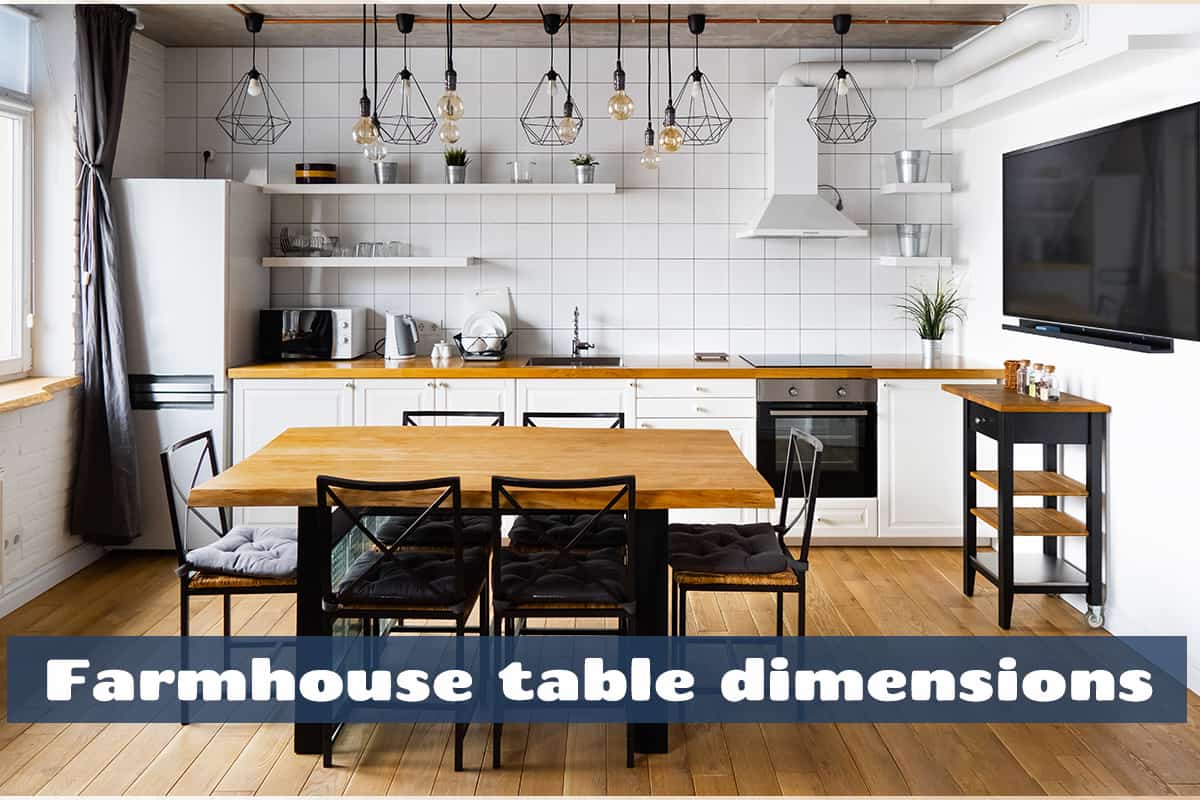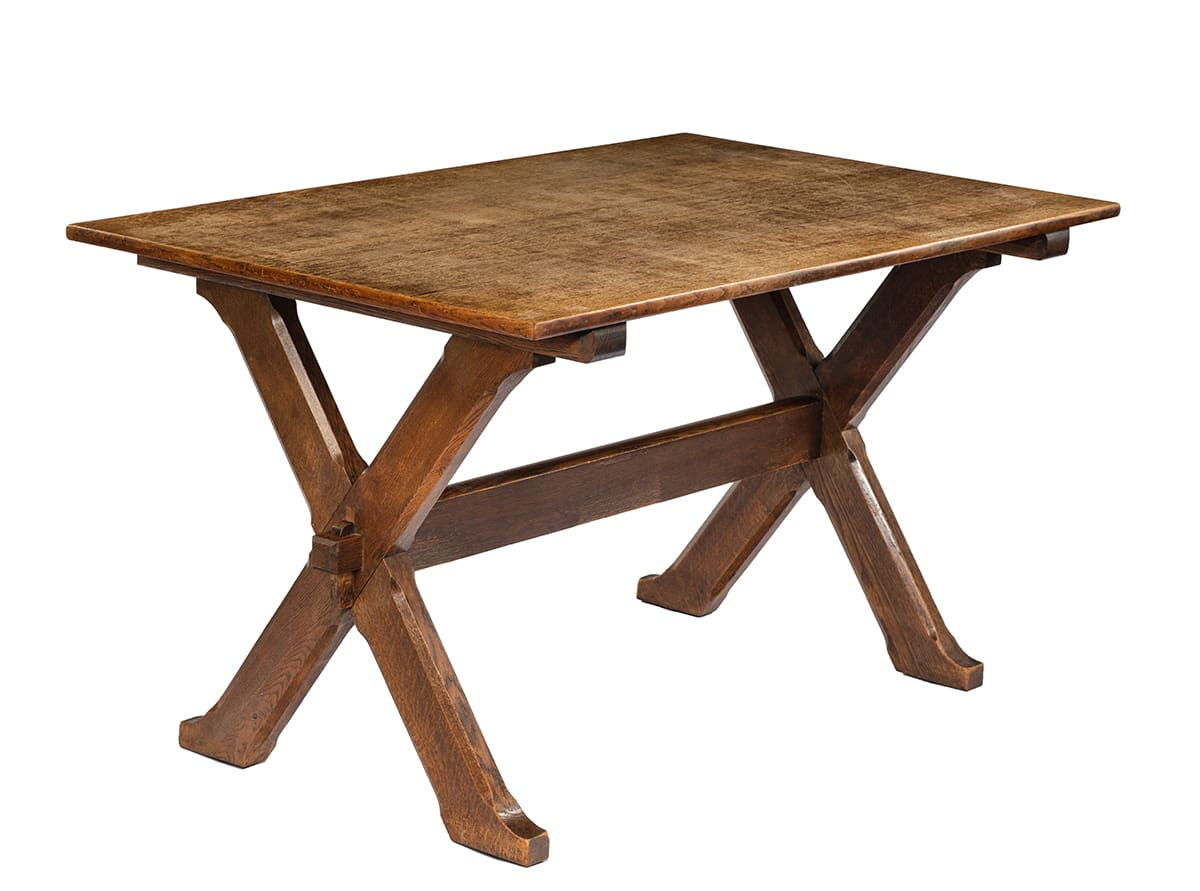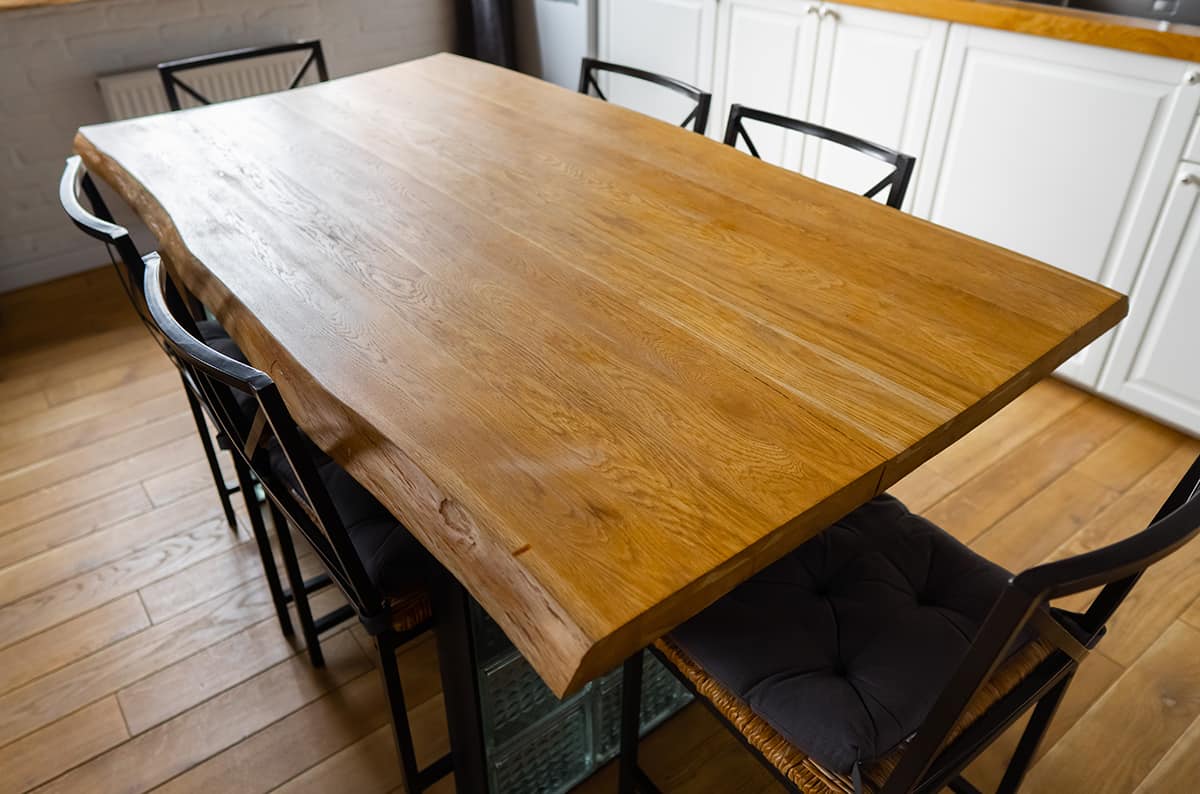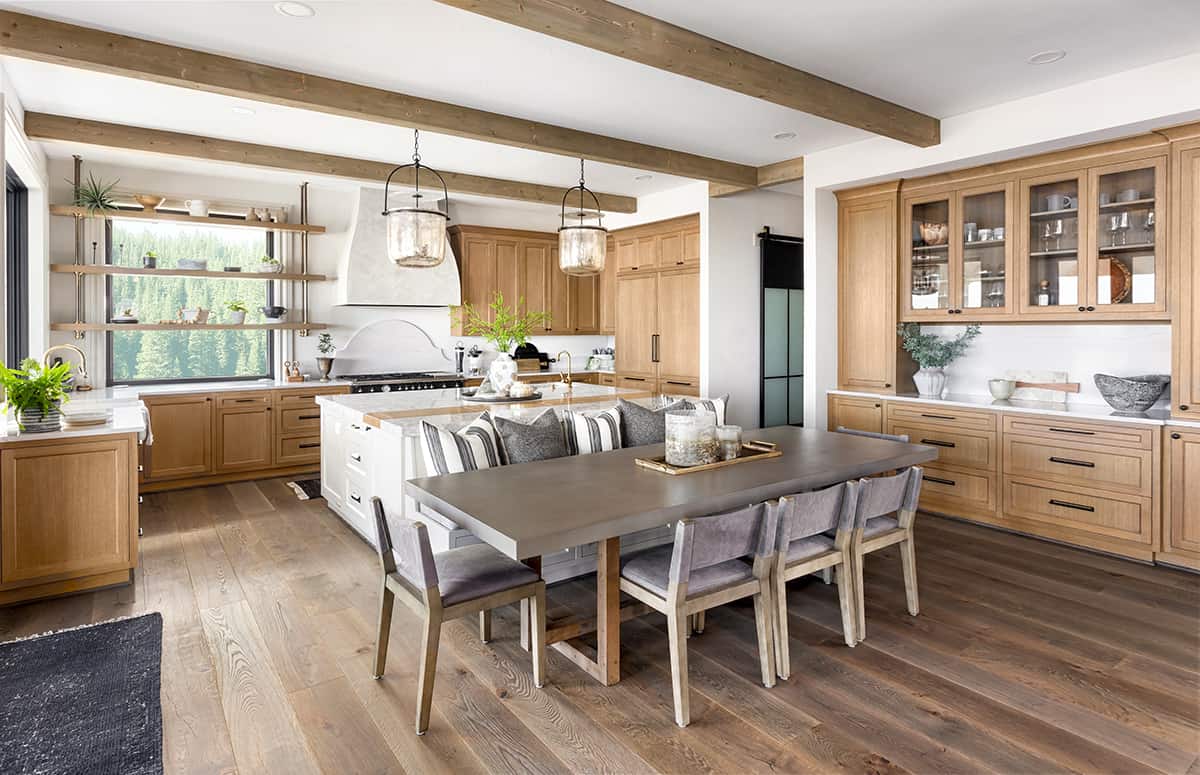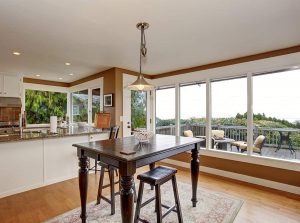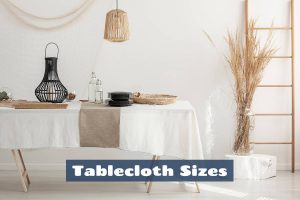Farmhouse tables are known for their rustic and charming aesthetic, making them a popular choice for both dining rooms and kitchen areas. Farmhouse tables tend to be large and sturdy, but there is a lot of variation, so you can select the right farmhouse table size to suit the needs of your family and the space you have available.
Here, we look at typical farmhouse table dimensions for small, medium, and large options.
If you are looking for a quick answer, here it is.
The typical height for a farmhouse table is around 30 inches (76 cm). A small farmhouse table will be from 60 to 72 inches (152 to 183 cm long) and 36 to 40 inches (91 to 102 cm) wide. A medium-sized farmhouse table will be 72 to 96 inches (183 to 244 cm) long and around 40 inches (102 cm) wide. A large farmhouse table can be more than 96 inches (244 cm) long and at least 40 inches (102 cm wide).
Small Farmhouse Table
A small farmhouse table will be around 60 to 72 inches or 152 to 183 cm long, and it will comfortably be able to seat 4 to 6 people. The recommended width space for each person seated at a dining table is 24 inches or 2 feet, so if the farmhouse table is 60 inches long, then it will be big enough to seat 2 people on either length, or if it is 72 inches long, then it could seat 3 people along each length.
The width of a small farmhouse table is typically around 36 to 40 inches or 91 to 102 cm. This provides enough space for place settings and dishes. The standard height of a farmhouse table is around 30 inches or 76 cm, regardless of the width and length of the table.
This is because table height is fairly standard across dining tables, allowing you to sit at a comfortable height and ensuring that you can mix and match a range of dining chairs with the table.
Medium Farmhouse Table
A medium-sized farmhouse table is usually around 72 to 96 inches or 183 to 244 cm long. It can seat 6 to 8 people comfortably, and you could even increase this number to 10 people if you want to use the heads of the table. The width of a farmhouse table is typically around 40 inches or 102 cm.
This provides enough space for place settings and dishes. Like other dining tables, a medium farmhouse table will be 30 inches in height measured from the floor to the table surface. This ensures the table is at a comfortable height to eat while seated.
Large Farmhouse Table
A large or oversized farmhouse table can be over 96 inches or 244 cm long, accommodating 8 people or more. For a farmhouse table of this size, you can expect the width measurement to be at least 40 inches or 102 cm.
This provides ample space for place settings but also helps to ensure the table as a whole looks proportionate. The standard height of a large farmhouse table is 30 inches or 76 cm.
What Size Farmhouse Table Do I Need?
The size of the farmhouse dining table you need depends on a number of factors, including the space you have available and the number of people you want to accommodate.
Seating
The length of the table should allow comfortable seating for the number of people you expect to accommodate. Consider the number of people living in your home, as well as any regular guests.
If you occasionally have a large party over for dinner, for example at Christmas or Thanksgiving, you could get an extendable table that will create more space when you need it, but be a more manageable size for the remainder of the year.
You should allow two feet of width space for each adult seated at the table, as this gives them room for elbows and means they can shuffle their chairs in and out from under the table without disturbing their neighbor.
Clearance
There needs to be adequate space around the farmhouse table for chairs to be pulled in and out without bumping into walls or other furniture. Ideally, you need 2 to 3 feet of space around the sides of the table where chairs will be positioned.
Room Size
The room size is going to be one of the biggest influencing factors on the size of the farmhouse dining table you can get because you can’t force a large table to fit into a small room.
Consider the dimensions of the room where the table will be placed. The table should fit comfortably within the space without overwhelming it, but it should also be big enough to be the dominant piece of furniture in a dining room.
Farmhouse Table Materials
Farmhouse tables are most commonly constructed from wood for a traditional and rustic look, but they can also be made from other materials, which will affect the aesthetic as well as the cost and durability.
The material of a farmhouse table can also affect the size since wooden farmhouse tables tend to be chunky compared with particleboard and veneer options.
Wood
Solid wood is a traditional choice of material for farmhouse tables. Pine is a popular option that was especially trendy in the late 1900s due to its relatively low cost compared to other wood and its distinctive grain pattern.
Other types of wood, such as oak and maple are now more sought after due to their style and durability, however they tend to carry a higher price tag. Reclaimed wood is also a beautiful option for creating a rustic and charming farmhouse look since it can add a weathered and distressed character.
Particleboard
If you want the look of a solid wood table but with a more budget-friendly price tag, then particleboard with a veneer is a good option. Particleboard tables, such as MDF tables, are made from a composite material at their core, and the table is then covered with veneer.
The veneer can be made from a thin sheet of wood to give the appearance of a solid wood table, or it can be made from laminate. Particleboard tables with a veneer can provide a cost-effective option while still offering the visual appeal of wood.
Metal
Some farmhouse tables incorporate metal elements, such as wrought iron or steel, along with wood.
These tables can create a striking contrast between rustic and industrial aesthetics. Commonly the legs or frame of the table will be made from metal, with a sheet of solid wood as the tabletop.
